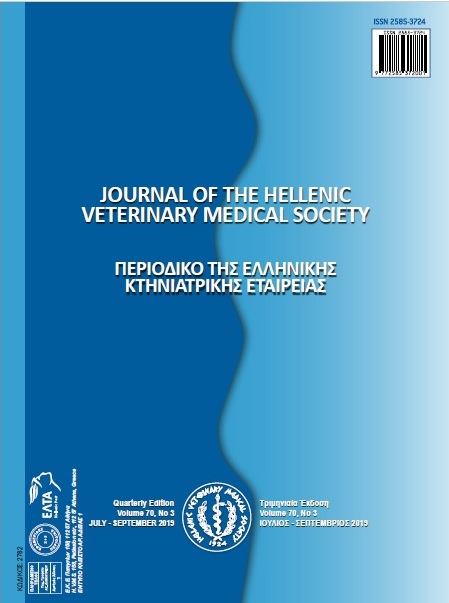Assessment of titanium dioxide nanoparticle as treatment of Aeromonas hydrophila infection in Oreochromis niloticus

Abstract
Nanoproducts became widely used materials all over the world. Antimicrobial properties of titanium dioxide (TiO2) nanoparticle (NP) were examined against Aeromonas hydrophila (A. hydrophila) bacteria and the minimum inhibitory concentration (MIC) was found to be 20 μg/ml of TiO2NP. In addition, the treatment efficacy of TiO2NP was examined in Oreochromis niloticus (O. niloticus) infected with A. hydrophila. One hundred and eighty fish (54±2.4 g b.w.) were divided into six groups (G). O. niloticus in G1, G2 and G3 were fed for 30 days with 0, 20 and 100 μg/g b.w. TiO2NP, respectively, while G4, G5 and G6 were i.p. injected with 0.2 ml distal water, 20 and 100 μg/g b.w. TiO2NP, respectively, for three times with ten days of interval. The blood parameters as well as some of the biochemical parameters of O. niloticus that received high dosage of TiO2NP were significantly affected regardless to the administration route. Elevation of the activities of glutathione peroxidase (GPx) and metallothionine (MT) were recorded with the high dosage. Furthermore, O. niloticus subjected to high dosage of TiO2NP had the lower survival rate (SR%) especially with the injection route (50%). On the other hand, no significant changes were demonstrated with the perceived TiO2NP MIC. The mortality rate (MR%) of challenged O. niloticus against A. hydrophila was decreased in case of TiO2NP MIC exposure, as G2 and G5 revealed 20 and 30%, respectively. Therefore, the 20 μg/g b.w. of TiO2NP could safely protect O. niloticus against A. hydrophila infection since no health hazards was observed. Meanwhile, health status of O. niloticus was adversely affected with high dosage of TiO2NP irrespective to the route of administration.
Article Details
- How to Cite
-
SHERIF, A., ALSOKARY, E., & ESAM, H. (2019). Assessment of titanium dioxide nanoparticle as treatment of Aeromonas hydrophila infection in Oreochromis niloticus. Journal of the Hellenic Veterinary Medical Society, 70(3), 1697–1706. https://doi.org/10.12681/jhvms.21796
- Issue
- Vol. 70 No. 3 (2019)
- Section
- Research Articles

This work is licensed under a Creative Commons Attribution-NonCommercial 4.0 International License.
Authors who publish with this journal agree to the following terms:
· Authors retain copyright and grant the journal right of first publication with the work simultaneously licensed under a Creative Commons Attribution Non-Commercial License that allows others to share the work with an acknowledgement of the work's authorship and initial publication in this journal.
· Authors are able to enter into separate, additional contractual arrangements for the non-exclusive distribution of the journal's published version of the work (e.g. post it to an institutional repository or publish it in a book), with an acknowledgement of its initial publication in this journal.
· Authors are permitted and encouraged to post their work online (preferably in institutional repositories or on their website) prior to and during the submission process, as it can lead to productive exchanges, as well as earlier and greater citation of published work.


